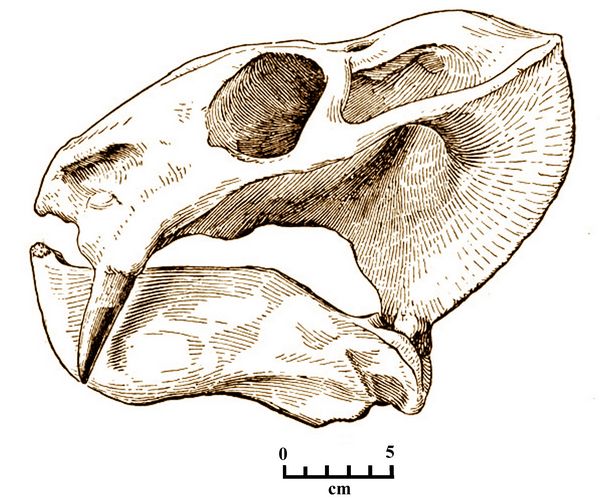Athena Review Image Archive ™
Dicynodon skull

Skull of Dicynodon (after King 1990)
Dicynodon ("two dog-teeth") was a medium-sized, herbivorous therapsid from the end of the Late Permian period (257-252 mya). It is the type genus of the Dicynodon Assemblage Zone in the Karoo Basin of South Africa, and related types have also been found on the Dvinia River in Russia and elsewhere.
The type species is Dicynodon lacerticeps, named by Owen (1845). It was about 1.2 m long, with no teeth except for two prominent, tusk-like canines, shown in the figure. It probably cropped vegetation with a horny beak, much like a tortoise, while the tusks may have been used for digging up roots and tubers.
Although
over 160 species of Dicynodon have been named from various Late
Permian formations in Russia, China, India, and elsewhere, these have
recently been reclassified, with the only valid members of the genus
now thought to be D. lacerticeps from South Africa, and D. huenei
from Tanzania, with nine other species from other regions assigned to
the infraorder Dicynodontia (Kammerer and Angielczyk 2009).
References
Kammerer, C.F. and K.D. Angielczyk 2009. A proposed higher taxonomy of anomodont therapsids. Zootaxa 20, pp. 1–24
King, G.M. 1990. The Dicynodonts: A Study in Palaeobiology. Chapman & Hall.
Copyright © 1996-2020 Rust Family Foundation (All Rights Reserved).